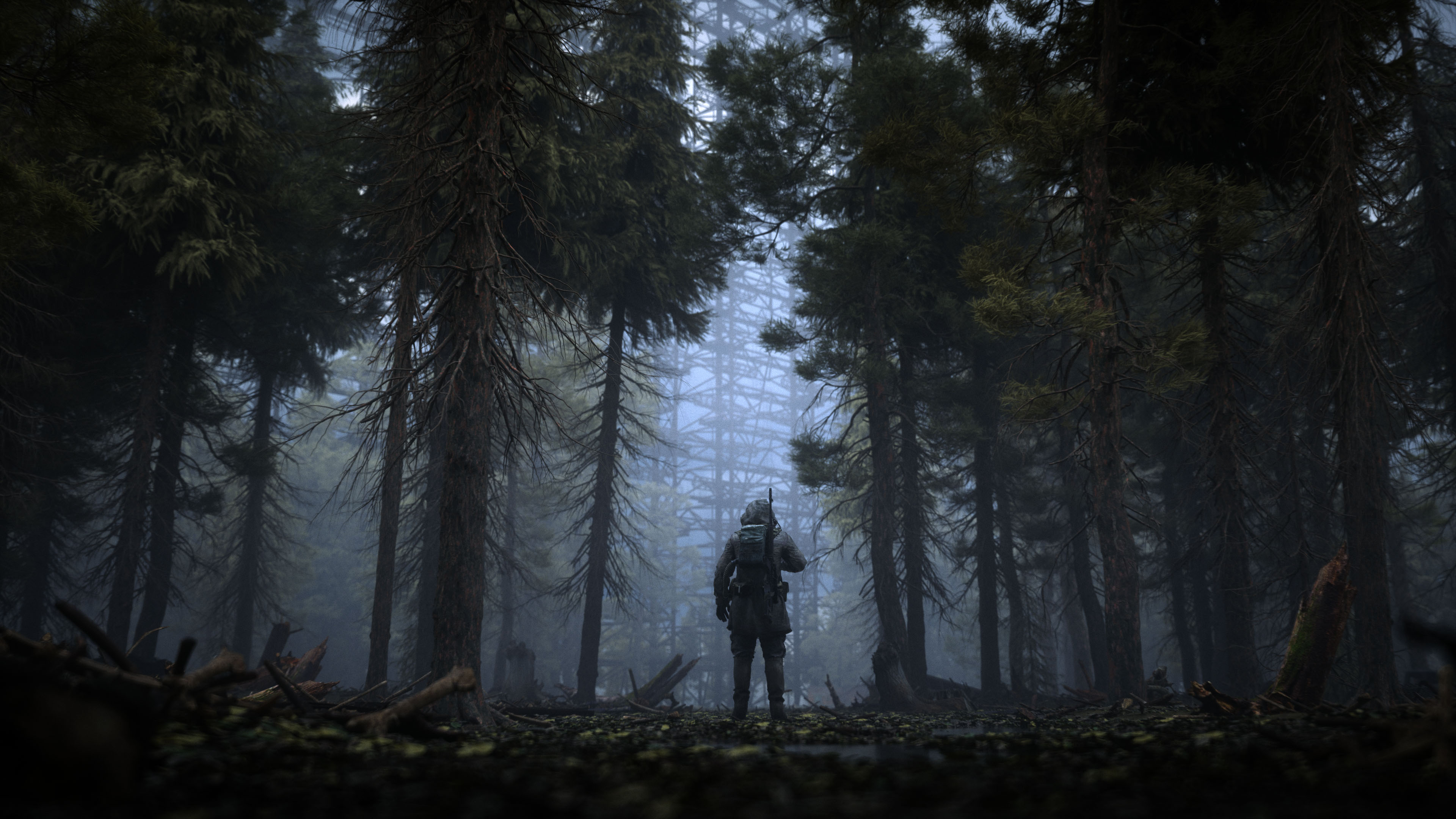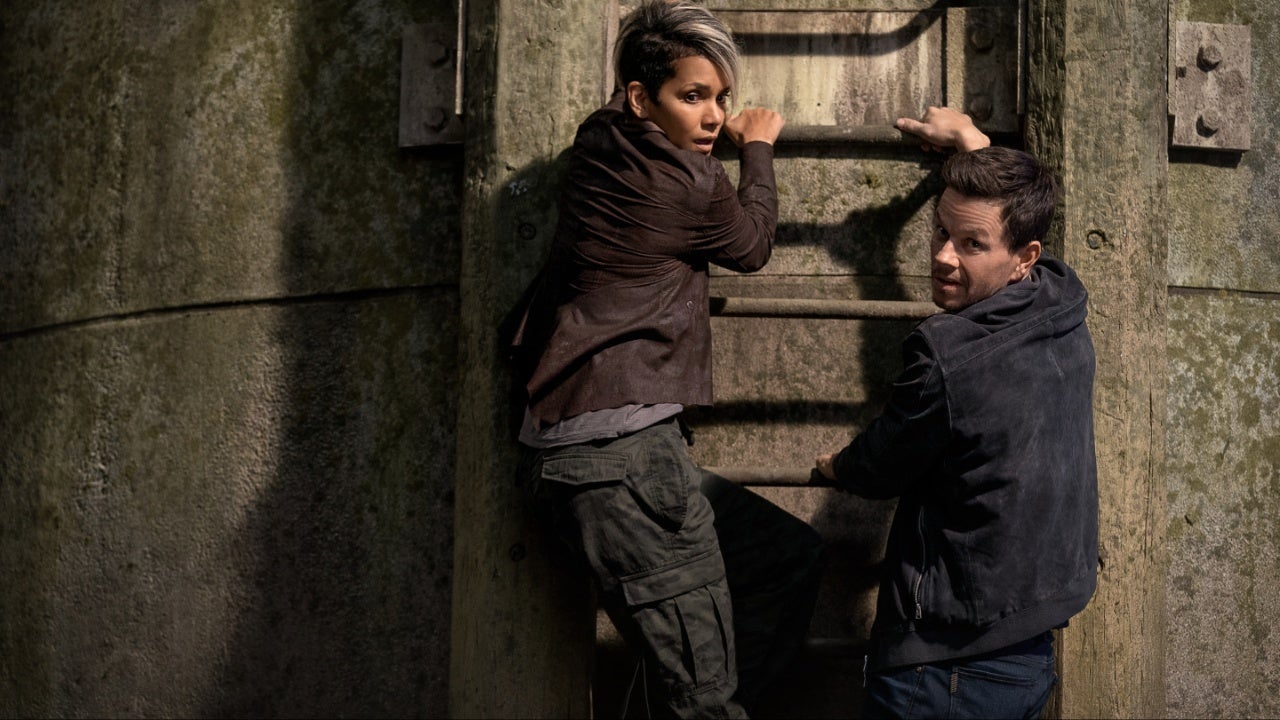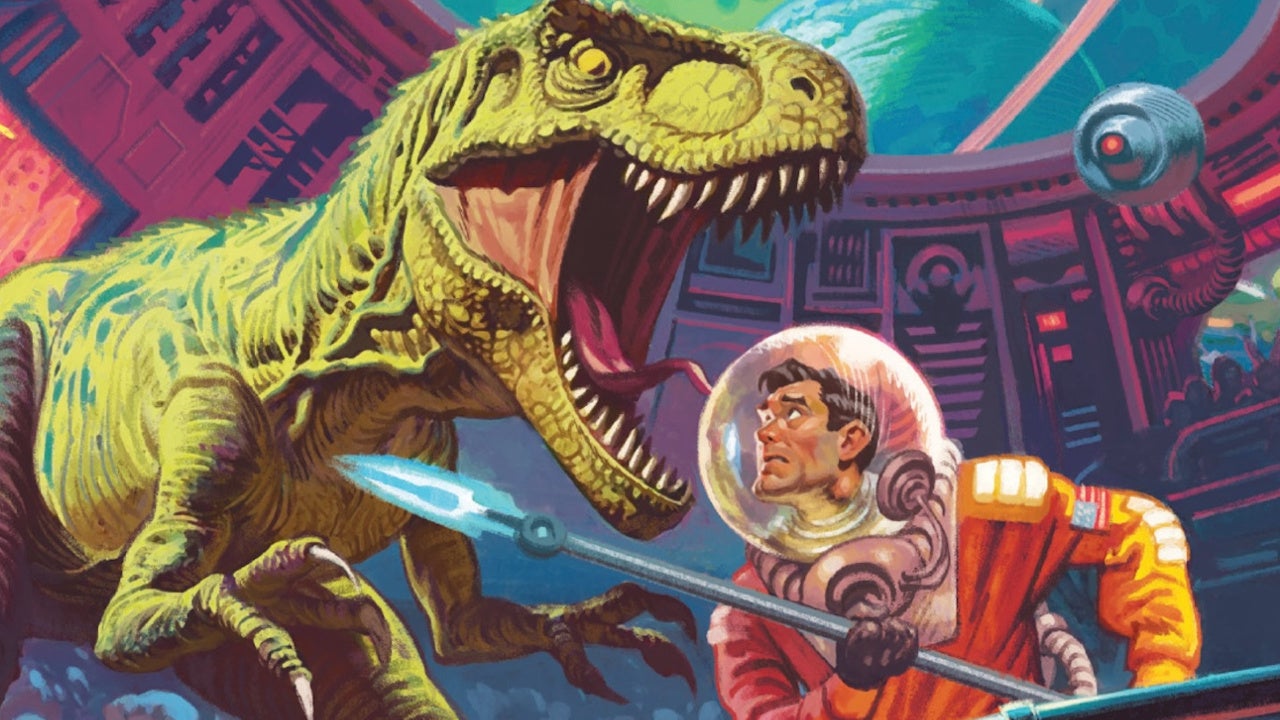
Walking through the lowland swamps, a red wind whipping at my back, my mind drifted from the mission at hand to the land itself. When bureaucrats were searching for somewhere to put the nuclear power plant that would become Chernobyl, the confluence of the Pripyat and the Dnipro rivers must have seemed like the perfect place. An industrial heartland, built up by generations of capable, skilled laborers; ready building materials, like rock and sand and gravel, lying just below the surface; and plenty of cool, flowing water to feed the hungry reactors. What’s left is a dark, wet ruin of incredible scale — more than 60 square kilometers of damp hell.
What STALKER 2: Heart of Chornobyl shows, more than any other game that I have ever played before, is how the land itself can turn against our best intentions. Even as developer GSC Game World’s many complex and ambitious systems churn and grind their gears in the background, this little digital piece of Ukraine stands placid and apart, a mysterious and intoxicating place that I just can’t get enough of — even when it’s trying to kill me.
What had initially seemed like a possible shortcut to the next mission area has suddenly turned into a dead end. I was forced to trudge nearly a half kilometer back through the muck just to get up onto dry land and sort myself out. I check the condition of my suit and my breathing mask — down below 90% already. I’d need at least a half dozen working firearms to trade in for repairs, and I only had two looted weapons on me. As I got to my feet, that was when the storm began in earnest.

STALKER 2 is filled with these kinds of expeditions, little trials that pull you across a shattered landscape toward a murky objective with only the vaguest details of how to get there and what to do once you arrive. The goal of these missions is usually to kill someone or something, or to find an obscure bit of technology in the hope of returning it to its rightful owner. Sometimes it’s both. There are factions, of course — the fascistic Ward, the idealistic Monolith, or the mobs of independent mercenaries wandering around trying to make a buck, just to name a few. But it seems that there is nothing more dangerous here in the Zone, and nothing more beautiful, than the land itself.
The STALKER series, which came to life in 2007 with STALKER: Shadow of Chernobyl, takes place in an alternate history where the Chernobyl nuclear disaster is only one of the many mysterious events that took place in northern Ukraine, a game that blends survival horror with intense tactical gunplay. Its dangers come in many forms. There are the anomalies, of course — bizarre, illusory phenomena that can pull you in, toss you around, and cut you to pieces if you wander too close. They’ll also give your graphics card a run for its money. (In fact, the game’s recommended hardware specifications were increased only about a week ago, many years after the game first entered active development.) There’s the wildlife, including mutant boars that hunt in packs and savage, four-legged lumpy dog things that leap and froth as they amble across the landscape. But the most deadly by far are the storms.
Called “emissions,” these storms blot out the sky with thick, red, swirling clouds. Lightning streaks down from the sky, sometimes dangerously close, rippling off the trees and leaving little shards of spark and flame that dance along the ground. They are as mesmerizing as they are deadly. An open radio channel bleats a warning that breaks the trance. I open my pack, drop the two looted guns onto the ground, and break into a dead run for the nearest shelter.
That’s when the skirmish begins.

One of the STALKER franchise’s claims to fame is its legendary A-Life AI, a procedural system that gives the game’s non-player characters and monsters realistic behaviors that they act out on their own when you’re not looking. Making my way through the Zone, I’m often startled by the sounds of gunfire and explosions in the distance. Sometimes it’s me who’s getting ambushed. Other times it’s a gunfight that I have no part in. But with the emission overhead, this particular battle is hard to hear until I’m right on top of it.
With less than a minute before the front of the emission passes over the shelter I’m on my way toward, two groups of three nearby are engaged in a tremendous gunfight in and around the squat brick building. Shotgun blasts and automatic weapon fire, grenades and groans — all of it gets sliced through by the deadly red wind. The darkness is lit by lightning fire. I panic, opening up on the last man standing as he turns his rifle toward me. A quick burst and I’m already moving again, leaping through the door into the shelter at the last moment and slamming it behind me. I hear him die, roasted alive by radiation as the storm overtakes him.
Inside there’s a tiny room filled with trash and empty vodka bottles. A few filthy mattresses sit near a puddle on the floor. I turn on the oil lamp. I reload my weapons. I eat some bread and some sausage. I apply a bandage to a bleeding wound I don’t remember receiving. I sit, alone, and watch the fire until the storm lets up. Had things gone differently, at least a few of those other men would be sitting here around the fire with me, telling jokes and playing the guitar.

Instead, once the emission passes, I’m left to deal with the aftermath of the gun battle. Six fresh bodies lay scattered on the ground. As I approach them, several of their disembodied heads seem to levitate before snapping back into place atop their shoulders — an unfortunate glitch of the digital character models popping into place as my view distance changes. One man, a Ward soldier from the looks of it, is stuck in an awkward T-pose, canted at a 30-degree angle to the ground near a rock formation. Another corpse is wedged halfway into the ground, his valuable weapon missing from his inventory, likely fallen through the earth itself and gone forever. One man is, incredibly, still alive. But the option to give him a med kit is bugged out, so I take out my pistol to shoot him in the head just to stop him from calling out. The sun comes up.
Just before I pull the trigger, though, I notice a pack of mutant boars has wandered through, only to get hung up on the terrain. They snarl and lather, flinching as I fire the pistol into the man’s head. They’re doing wild donuts among the shrubberies at the edge of the encampment as I finish looting his body. I don’t even bother to shoot at them before moving on. Ammunition is simply too expensive.
It is these moments of quiet after big battles that ruin the immersion for me, clear evidence that STALKER 2 needed more time in development. It’s easy to turn your back on these glitches and walk away, to take comfort once more in the dreary perfection of the land itself. But it’s the gracelessness of the combat that always seems to get me down. Nearly 40 hours in, invariably things end up the same way every time — a chaotic gunfight, delivered without nuance or reason, and a pile of bodies that look like something out of Garry’s Mod or Fallout 3.
For fans of tactical shooters, games like Escape from Tarkov and the Call of Duty series, there’s a lot of potential here. The selection of firearms feels limited at first, but it quickly opens up, providing new and interesting tools for exploration and destruction. But it’s the A-Life AI, the animations, the physics, and in some places the lighting and the textures that feel the most half-baked at launch. As organic as they are, encounters like these just don’t quite live up to the hype.
These problems are not insurmountable, however, in terms of gameplay. I’ve learned that 20-gauge slug rounds and a satchel full of little brown grenades can solve nearly any problem, especially a problem of the underground monster variety. And, if you’re excited by the appeal of having three or four different varieties of exotic rifle cartridge to collect and use in combat, then I have good news: Developers say that STALKER 2 should all be in working order after its promised day-zero patch. Best bet, though, would be to give it another month… at least.
Meanwhile, for fans of big, open-world games like DayZ and Horizon Zero Dawn, your time is now. A beautiful new world has been made available to you, with more than 60 square kilometers of forbidding wilderness to explore, enemy AI be damned. When you tire of the swamps and the hills, of the sinkholes and the ruined cottages, its densest industrialized areas hold labyrinthine warrens of industrial decay that will satisfy the cravings of the most ambitious urban spelunkers. Beneath this thin crust of earth, the Zone is a wild and terrifying wasteland with challenges and horrors you can only imagine. But the game’s many other systems still need a bit more work to reach the same level of perfection.
Good luck out there. You’re going to need it.
STALKER 2: Heart of Chornobyl is available now on Windows PC and Xbox Series X, as well as included with either a Game Pass Ultimate or PC Game Pass subscription. The game was reviewed using near-final code provided by GSC Game World. Vox Media has affiliate partnerships. These do not influence editorial content, though Vox Media may earn commissions for products purchased via affiliate links. You can find additional information about Polygon’s ethics policy here.
Source:https://www.polygon.com/review/481607/stalker-2-review-pc















